Anyone whos ever taken a spill jumping from a dock or launch onto the deck of a boat knows the value of good boat shoes. They need to be comfortable enough to wear six or eight hours at a time, but they also need to be sufficiently rugged to stand up to rough treatment. Most of all, they need to be safe. Most boat shoes claim to be skid and slip resistant, but what does that really mean? With such well-known companies as Columbia Sportswear and Rockport moving into boating, along with a relatively new company, Shoes for Crews, the time is ripe to reassess those leather moccasins we all take for granted and check out what else is afoot on the water.
How We Tested
No matter how good a shoe is at staying in one place, it still needs to be comfortable, so the first thing we did was to wear each of the shoes for a few days for eight hours at a time. Though fit and comfort are fairly subjective in shoes (so much depends upon the shape of your feet), we were able to determine some areas that might be problems for some people. Some of the shoes didnt look as though they would remain comfortable after a full day on ones feet, so we were sure to spend plenty of time hoofing around in each pair.
But no matter how comfortable, boat shoes arent safe unless they resist slippage, so we took each pair to both wet and oily surfaces. We also checked the shoes to see if they’d leave scuff marks (all were fine), and soaked the shoes and checked to see how quickly they would dry.
Sebago
Sebago sent three pairs of shoes, but they offer scores of designs, with eight different sole designs just among their Docksides line. Unfortunately, they don’t perform as well as many of the other, sportier shoes.
Sebago Waikiki
These shoes are possibly the most stylish of the womens shoes that we tested. A thong sandal that is easy to slip on, and very quickly conforms to the wearers foot, the Waikiki grips the foot and stays on far better and more comfortably than we anticipated. The leather is soft and supple, but still strong, and looks as though it would hold up well to a great deal of wear. For the inherent design problems in a thong (exposed, stubbable toes; limitation of quick movements), it behaves well, but its still not suitable for active boating. Even with the conforming sole, there were moments when a quick movement left the shoe behind.
In our slip tests, the Waikiki performed poorly. In water, we could maintain control with effort, but on oil, its impossible-comparable to the $5 tennis shoes we bought at KMart. If what youre looking for is utility and a bargain, at $40 youd be better off with the tennies. These are not shoes to wear if youre going to be doing anything that requires fast movement. Even if all you plan to do is to fend, youll still want something else for jumping to the dock.
Like all thongs, they have that annoying suck and thwack sound as you walk. However, if you have a good pedicure and you want something to wear as a passenger on a casual cruise, these are probably among the nicest looking sandals youll find, and they do give better control than those with flat smooth soles intended for the beach.
Sebago Foresider II
The Foresider II is the best performer among the traditional boat shoe styles that we tested. The leather is supple and accommodates the foot easily. After a day, they were broken in as though they had been worn for months. The leather doesn’t seem all that resistant to watermarks or scuffing, the downside of that supple leather. They didnt cause blistering or hot spots with or without socks, though they do have the annoying property of staining both feet and sock when they get wet.
On wet surfaces, the Foresider II is good. You may need to concentrate, but slipping shouldnt be a problem, and its easy to regain control if you do slip. On oily surfaces, control comes with effort, but with much less than the other traditional looking boat shoes we tested. At $90, wed like to see better performance along with its good looks, but if youre willing to sacrifice function and value for style, this shoe should perform well in most situations.
Sebago Bayside
The Sebago Bayside has the look of a shoe that is trying to be a cross between a boat loafer and a sneaker. The leather upper connects to a thick sole with a nice thick lip against the leather that helps guard against seepage. Otherwise, to our mind, it incorporates the worst of both worlds, with the look of a deck shoe with a basketball sneaker-type sole. Wed rather have a real sneaker. And the sole performs more like a boat shoe than like the sneakers we tested.
The shoe does have some nice features, particularly the lip of Stretch Dri-Lex on the tongue and heel, which should slow water seepage and also makes for a nice cushion at two of the traditional pressure points when going sockless. The extra-thick laces, presumably to resist wearing and match the shoes chunky scale, may last longer than standard size leather laces, but are rather ungainly and difficult to tie.
In slip tests, the Bayside was comparable to the Waikiki-not great. If youre looking for a traditional boat shoe, go with the Foresider II, and if you want a sneaker, read on; we tested better options.
Sperry Beachwalker
Although this shoe performed very well in both slip tests (comparable to the Sebago Foresider II), its a shoe more suited to kayaking or canoeing than for wearing on boats. Its really a watersock, like surfers use, which is great for grip, but not very convenient if you are likely to stub your toe on cleats or have your foot stepped on by an over-lively crew member. And with fishing gear on deck? Lets not even think about it.
Its too bad, because at $24.95 its the least expensive of our shoes. Grip is excellent, and it dries out quickly after getting wet. If youre the type who usually boats barefoot, perhaps you wont mind the barely-there feeling of the Beachwalker. If you need any kind of arch support or protection against obstacles, these shoes wont suit.
Sperry Navy Striper
The Striper is a low tennis shoe. Its a nice looking shoe, but also the one that was the most difficult for this high-arched tester to break in. They never did get comfortable, even with the padding around the ankle and heel. The blue canvas has a slightly aged look, which makes soil and scuffs less noticeable. The Striper has the same high rubber lip as the Bayside, presumably for the same reason. The only problem is that once water does get past the rubber, it soaks right into the canvas. Once soaked, the shoes stay that way for quite a while. (When we checked after a day, they were still damp.)
As for slippage, the Striper is fine on dry surfaces and manageable on wet surfaces, but on anything really slippery, its not to be trusted.
Shoes for Crews
Shoes for Crews is a relatively new company that specializes in shoes for folks who work on their feet on slippery surfaces. They offer a regular sneaker version, the TWX, and a low-cut, surfer-style shoe, the T-Jam. Though they arent incredibly high on style, and felt a little heavy to us, they function very well on water and oil. Only Harkens HS Lite performs better on oil and comparably in water.
At approximately $50 (depending on the style you buy), these are an economical option. Construction of these shoes seems not as rugged as the Harken or the Rockport (the other shoes that performed about as well in slip tests), and the eyelets for the laces have no grommets and are hard to lace. Also, the shoes leather upper has few ventilation holes, and, combined with the padding around the ankle and on the tongue, this can make for a shoe that stays damp for over a day after getting soaked.
Both models have the nice thick soles that weve seen elsewhere, and strong stitching around the soles and seams. The soles, made of a propietary material that grips floor surfaces, have a pattern much like good nonskid. And the TWX has a depression near the arch to make climbing rungs easier. If finances and control are more important than showcasing, Shoes for Crews is a good choice. Both models are a Best Buy.
Rockport XCS
In spite of the fact that our pair was BRIGHT orange, Rockports new sailing sneaker is still a good-looking shoe. With an attractive combination of mesh and leather (theres a suede version available also), and a nice thick rubber sole that extends a good inch and a half up the heel of the shoe, this is a well-constructed shoe. On both oil and water, Rockport performed very well, only slipping when we really worked hard at it. In these shoes, if you lost your balance, even on an oily surface you could regain control very easily and likely stay on your feet most of the time. Rockports promotional material say that has to do with the way the sole is cut with two parallel troughs running the shoes length and concentric rings to prevent hydroplaning both while walking and pivoting. This shoe also has a great deal more surface contact than many of the other models we tested. Whatever the reasons, it definitely works.
Construction looks good. A possible weak point might be the seam where the rubber meets the upper-it appears to be glued rather than stitched.
There are a few downsides to this shoe. The thick cord laces are rather slippery and a bit long. Even with a double knot, they don’t always stay tied, and if the laces or the shoes stretch over time, you may end up stepping on laces-not the most safe situation in any circumstance.
Also, youd think that with so much mesh in the upper they would dry off quickly, but the padded areas tend to retain moisture once soaked. We checked these shoes 24 hours after soaking and found they were still damp in places.
Finally, the shoes have loops on the tongue and at the heel; we’re not sure why they’re there, but regard them as a possible snag point (as on a cleat).
Overall, this is a comfortable shoe that will keep you on your feet. Youll get the same control from Shoes for Crews at almost half the price, so the question is whether Rockport will last twice as long, which it might. After that, its a question of style and, because the Shoes for Crews model is a higher sneaker, of how much ankle support you need.
Harken HS Lite
Of all the models tested, this shoe comes out the winner. Not only will it not slip on water, it wont slip in oil either. Not only that, its a comfortable shoe thats fairly light. Its well constructed, looks durable and its high enough to give good ankle support.
The sole doesn’t quite reach the heights of the Rockport shoe, and once soaked it takes a while to dry completely, but if youd rather have control than dry feet, this is the shoe for you. Because its priced at $85, you could make a case for choosing Shoes for Crews, but Harkens construction wins hands down.
Columbia Mainsail & Hydrotrainer
Both the Columbia Mainsail and the Columbia Hydrotrainer are well-made, comfortable shoes, which is not surprising from a company specializing in outdoor wear. Both have a bit of a klunky look, with toes that make them look rather like moon shoes, but even so, they have a stylish feel. Each is made of materials that dry quickly, adding to the comfort factor.
Unfortunately, neither shoe performed particularly well in our slip tests. The soles have very little surface contact, and on the Hydrotrainer, the black soles seem to have a little less give than the Mainsail. Even walking on wet surfaces was hard, and on an oily surface was nearly impossible. We thought wed be hard-pressed to try to stay upright on a slippery surface in choppy seas wearing these shoes. Either one would be well-suited, however, for use as a hybrid shoe.
The rugged soles would perform well on slippery rocks, and function moderately well on wet surfaces that are not too slippery, so if you plan a boating/camping trip, or a canoe trip with a good amount of portages, these may be worth a look. Columbia has succeeded in producing good outdoor shoes, but for a serious deck shoe where traction is paramount, wed look elsewhere.
Bottom Line
Unless all you want is style, wed not choose Sebago, Sperry or Columbia. They look nice, but in our tests they didnt perform as well in slippery conditions.
If you want a good, no-slip, no-frills shoe, Shoes for Crews is worth a look. If youre willing to spend a little more for style and durability, go for the Harken HS Lite or Rockport XCS.
No matter which shoe you buy, youll probably want to try it on before you purchase. We found wide variations from one shoe to another, particularly when trying to convert from mens to womens sizes (necessary with some companies). Also, comfort and fit are very subjective, and much depends on the shape and condition of your feet.
Contacts- Sebago, P.O. Box 3000, Westbrook, ME 04098 ; 207/854-8474. Sperry Topsider (Striderite), 191 Spring St., Lexington, MA 02173; 617/824-6000. Shoes for Crews, 1400 Centrepark Blvd., W. Palm Beach, FL 33401; 800-634-7095. Rockport Co., 220 Donald J. Lynch Blvd. Marlboro, MA 01752; 800/762-5767. Harken Yacht Equipment (Saucony), 1251 E. Wisconsin Ave., Pewaukee, WI 53072; 414/691-3320. Columbia, Box 83239 Portland, OR 97283; 800/622-6953.



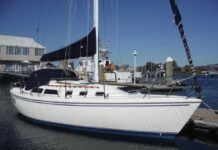









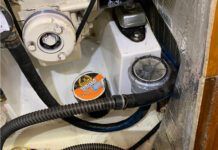


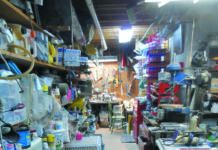
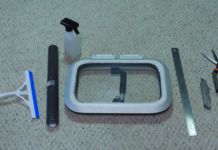
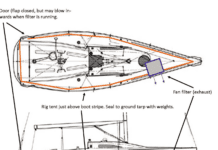












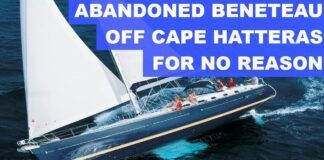



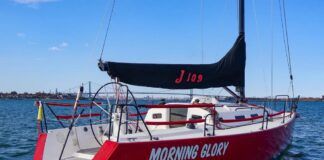
Darrell,
Where did you get the Harken lites? I cannot find them on Amazon, Defender, Westmarine, etc. and Harken say it has not carried shoes for a long time.
Sorry. I thought the date of the article was 2020, not 2000. Any plans to revisit the subject?
We are working on an update now. There are several very relevant reports on this topic though. I’ll bump this one, our most recent multi-shoe report, up higher. There have been a couple of updates — single shoe reports — since this and a search under “shoe test” should turn them up. https://www.practical-sailor.com/personal-gear-apparel/sailing-shoe-test-update-2014